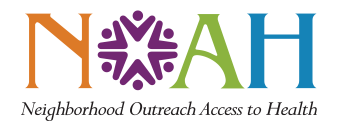Exercise Options: Alternatives to the Gym
The start of a new year is the perfect time to set goals and prioritize your health. Adding physical activity to your routine is a great way to support your overall wellness, reduce stress, and boost your energy. You don’t need a gym membership or hours of free time to make it happen—there are plenty of creative ways to stay active, even with a busy schedule. Before beginning a new exercise program, be sure to consult with your healthcare provider.
Recommendations
- For adults: at least 30 minutes a day, five days a week of moderate-intensity aerobic activity (ex. brisk walking, riding a bike, and mowing the lawn). Preferably, also with two days a week of muscle strengthening exercises (ex. Lifting weights, using resistance bands, and some forms of yoga).
- For children ages 6 to 17 years old: at least 60 minutes (one hour) or more of moderate-to-vigorous intensity activity most days and at least three days a week of muscle strengthening exercises.
- For more information, please check out CDC guidelines.
Outdoor Exercise Options
- Walk or jog around your neighborhood
- Hike at a local trail
- Play basketball, frisbee, tennis, etc. in your own yard or a park
- Jump rope in your garage or outside
- Take a bike ride
- Do gardening and yard work
Home Options
- Walk briskly around the house or up and down stairs
- Dance to your favorite music
- Use home cardio machines like a treadmill, stationary bikes, or rowing machine
- Use free weights, resistance bands, or one of these items lying around your house for muscle strengthening
- Download a cardio or strength training app, many of which don’t require any exercise equipment.
- Exercise videos. YouTube is full of videos for cardio, muscle strengthening, yoga/stretching, and other exercises.
Join a Team or Take a Group Class
- Joining a team or taking group classes is a fun and social choice.
- Check out City of Phoenix Parks and Recreation for classes and team sports for youth and adults.
- Your local gym may have classes or you can go to a specialized studio for things like martial arts, spin, barre, yoga, etc.
Whether you’re aiming for more outdoor adventures, fun group classes, or quick at-home workouts, every small step counts toward better health and well-being. Schedule an appointment with your NOAH provider today for more tips and tricks to bettering your health this year.

